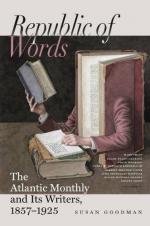They who gape, horror-struck, at the endless revelations of chemistry, without giving reason time to act, err in the second manner. Led away by the brilliant hues and wonderful transformations of the laboratory, they forget the size of the world outside, in which these changes are enacted, and the quiet way in which Nature works. The breath of chlorine is deadly, but we daily eat it in safety, wrapped in its poison-proof envelope of sodium, as common salt. Carbonic acid is among the gases most hostile to man, but he drinks it in soda-water or Champagne with impunity. So we cannot explain how a poison will act, if introduced into the body in the diluted form in which Nature offers it, and there subjected to the complicated chemico-vital processes which constitute life.
In the alembic of the chemist we may learn analysis, and from it infer, but not imitate, save in a few instances, the synthesis of Nature. Changes in the arrangement of atoms, without one particle altered that we can discover, may make all the difference between starch and sugar. By an obscure change, which we call fermentation, these may become alcohol, the great stimulant of the world. By subtracting one atom of water from its elements we change this to ether, the new-found lethe of pain. As from the inexhaustible bottle of the magician, the chemist can furnish us from the same two elements air or aquafortis. We may be pardoned these familiar examples to prove that we must not judge of things by their palpable qualities, when concentrated or in the gross. That fiery demon, nitric acid, is hid, harmless in its imperceptible subdivision, in the dew on every flower.
From all this we conclude that the evil effects of tobacco are to be determined by their proved physiological effects; and also that we must aid our decision by a survey of its general asserted effects. In treating of these effects, we shall speak, first, of what is known; second, of what its opponents assert; and, third, of what we claim as the results of its use.
What is absolutely known is very little. We see occasional instances of declining health; we learn that the sufferers smoke or chew, and we are very apt to ascribe all their maladies to tobacco. So far as we are aware, the most notorious organic lesion which has been supposed due to this practice is a peculiar form of cancer of the lip, where the pipe, and particularly the clay pipe, has pressed upon the part. But more ample statistics have disproved this theory.




